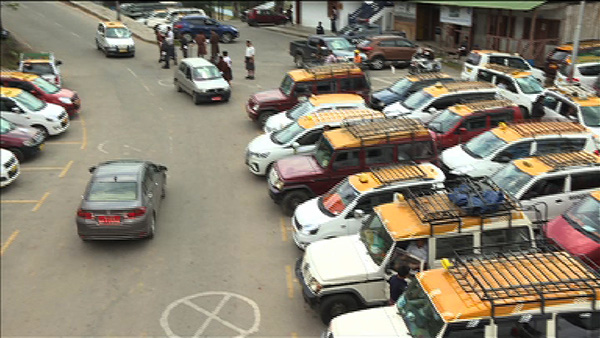 In the latest development towards the implementation of Bhutan Sustainable Low-Emission Urban Transport system, the Ministry of Information and Communications (MoIC) has written to the Royal Monetary Authority (RMA) to increase loan ceiling on purchase of electric vehicle taxis to 70 per cent.
In the latest development towards the implementation of Bhutan Sustainable Low-Emission Urban Transport system, the Ministry of Information and Communications (MoIC) has written to the Royal Monetary Authority (RMA) to increase loan ceiling on purchase of electric vehicle taxis to 70 per cent.
This is to make electric vehicles affordable for taxi operators. Bhutan Sustainable Low-Emission Urban Transport system aims to roll out 80 electric vehicle taxis in Thimphu region by the end of this year.
The project is the country’s effort towards remaining carbon neutral.
Bhutan Sustainable Low-Emission Urban Transport System project requested RMA to increase the loan ceiling considering the fact that electric vehicles with a good range would come at a higher cost.
RMA also increased the loan ceiling on the purchase of electric vehicles to 50 per cent.
“Through some research, we have come to know there are a lot of electric cars that give a good range of about 200 to 400 kilometres after one time charge. For instance, Nissan 3rd generation gives 400 kilometres, likewise, Hyundai Kona also gives the same range and Ford gives 200 to 300 kilometres. All of these cars cost a minimum of Nu 1.5 M to Nu 2.7 M. So if taxi operators choose a car that gives 400 kilometres the cost is also higher, and then comes the question of affordability,” Phub Gyeltshen, the Project Manager of MoIC said.
There is a 20 per cent subsidy grant which translates to US$ 5,500, on purchase of every electric vehicle taxi. Till date close to 100 taxi operators had registered with the project office.
“I personally like electric cars. The fuel price keeps fluctuating these days and we could save if we don’t have to fuel cars,” Tshering Wangmo, a taxi operator, said.
”We spend at least Nu 800 to 900 on fuel every two to three days when we don’t have passengers. And when we have passengers, we spend more than Nu 1000 a day,” Tshomo, another taxi operator, said.
“Initially there weren’t many interested but now we have quite a lot interested and wanting to register. If the project office sets up adequate charging stations across six regions of Thimphu, Punakha, Paro, Chhukha, Haa and Wangdue Phodrang, I don’t see any inconveniences,” Dorji Wangchuk, the President of Taxi Association, said.
The project also plans to set up 25 charging stations in six districts- Haa, Paro, Punakha, Phuentshogling, Wangdue and Thimphu.
300 taxis in these districts will switch to electric vehicle taxis within three years. It was found that taxis form only five per cent of the total vehicle fleet. But their contribution to carbon emission is three times higher due to higher travel intensity and mileage of about 75,000 kilometres per year.
“The emission from cars is very high in Thimphu considering the increasing number of cars in the town. We targeted taxi drivers because it is the taxis that travel the most. They go about 150 to 200 kilometres, minimum every day. Consequently, they are the ones who use most fuel and emitting more harmful gases,” Phub Gyeltshen, the Project Manager from MoIC, added.
The project is expected to bring in significant health, environment and cost benefits. It is estimated that through the initiative Bhutan will reduce carbon emissions by 93,000 tons over the lifetime of the vehicle.
Besides this, the project will also help cut down cost on fuel import. According to the National Statistics Bureau, in 2016 alone Bhutan spent more than Nu 7bn on fuel import.
The MoIC is implementing the project together with UNDP Bhutan with the financial support of US$ 3 M from the Global Environment Facility.








